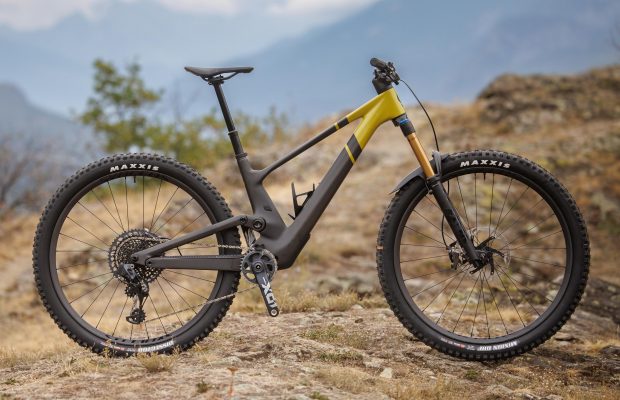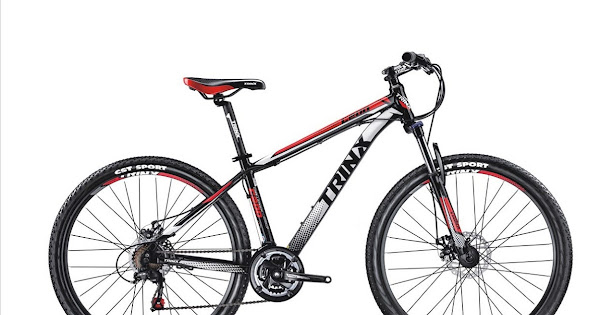Cart Detail
FILTER SEARCH
SEARCH RESULT
Bookmark DETAIL


ID: 2211B12
Created At: 10-Nov-2022 05:35 PM
Scott Genius ST 900 Tuned first ride review - MBR
It’s been five years since Scott launched a new Genius. That feels like like a lifetime, and not only in development terms compared to the current best trail bikes on the market, so what has Scott got up its sleeve (or in this case, seat tube) with the crafty new Genius? Need to know 29in wheel trail bike with 160/150mm of front and rear travel Integrated Suspension Technology with the rear shock mounted inside the frame ST version has three suspension modes: Climb, Ramp Control and Descend. Fox 36 Factory fork with Grip2 damper is NOT connected to the handlebar remote Full carbon chassis, carbon crankset, carbon wheelset and carbon one-piece handlebar. Adjustable head angle using a rotating Acros headset cup Full Syncros cable integration Bold new World Before we get into the details on the new Genius, let’s back up a bit. Scott became the majority shareholder in Bold Cycles back in 2019, as it had a unique frame design with an internal shock and some neat geometry adjustments. Bold is still running as an independent brand and came out with the new Linkin Trail last year, but Scott has spent over two years adapted the technology to suit its specific needs, the new 150mm travel Genius the fruit of those labours. There are some obvious practical benefits to hiding the shock inside the frame, but from a purely aesthetic point of view it makes the bike look incredibly clean. Apart from a little loop of brake hose and remote cable at the handlebar of the Genius ST 900 Tuned, there’s nothing to spoil that sleek silhouette. Other companies have dabbled with internal or partly hidden shocks but the rear shock on the Genius is fully housed inside the frame. To access the shock adjusters and air valve, you press on a little button on the shock door and it pops open. Even this little bit of technology is cool – it’s actually borrowed from NASCAR where it’s used to hold the bodywork on. Everything you need to make suspension adjustments – the air valve, rebound and compression dials – are just behind this door. You add air to the shock in the conventional manner but because you can’t see the O-ring, Scott has built an external sag indicator into the link, just behind the seat tube. The link is forged 7075 aluminium and features a splined axle design, almost like a BB spindle that allows Scott to run bigger bearings, which improves durability. The little sag indicator, which functions like the O-ring, is really neat too. Enclosing the shock means it’s protected from the elements, so the seals are going to last longer and even jet washing the bike doesn’t have the same consequences. Scott did hint at running rear shocks without seals for improved suspension feel, but currently it’s erring on the side of caution. We suspect that may be a feature on the next bike to get an internal shock though, and you don’t have to …Continue reading »
It’s been five years since Scott launched a new Genius. That feels like like a lifetime, and not only in development terms compared to the current best trail bikes on the market, so what has Scott got up its sleeve (or in this case, seat tube) with the crafty new Genius?
Need to know
29in wheel trail bike with 160/150mm of front and rear travel Integrated Suspension Technology with the rear shock mounted inside the frame ST version has three suspension modes: Climb, Ramp Control and Descend. Fox 36 Factory fork with Grip2 damper is NOT connected to the handlebar remote Full carbon chassis, carbon crankset, carbon wheelset and carbon one-piece handlebar. Adjustable head angle using a rotating Acros headset cup Full Syncros cable integration
The new Scott Genius incorporates Bold’s concealed shock technology, but mounts the shock vertically within the seat tube, rather than horizontal in the down tube, and uses a rocker link to drive it rather than Bold’s concentric BB link.
Bold new World
Before we get into the details on the new Genius, let’s back up a bit. Scott became the majority shareholder in Bold Cycles back in 2019, as it had a unique frame design with an internal shock and some neat geometry adjustments. Bold is still running as an independent brand and came out with the new Linkin Trail last year, but Scott has spent over two years adapted the technology to suit its specific needs, the new 150mm travel Genius the fruit of those labours.
Sag indicator is integrated into the upper link pivot. The hidden shock should be a Godsend for filthy UK winters.
There are some obvious practical benefits to hiding the shock inside the frame, but from a purely aesthetic point of view it makes the bike look incredibly clean. Apart from a little loop of brake hose and remote cable at the handlebar of the Genius ST 900 Tuned, there’s nothing to spoil that sleek silhouette.
Clean, crisp lines are everywhere you look on the new Genius.
Other companies have dabbled with internal or partly hidden shocks but the rear shock on the Genius is fully housed inside the frame. To access the shock adjusters and air valve, you press on a little button on the shock door and it pops open. Even this little bit of technology is cool – it’s actually borrowed from NASCAR where it’s used to hold the bodywork on.
Custom Fox Float X shock puts all the adjusters and air valve within easy access.
Everything you need to make suspension adjustments – the air valve, rebound and compression dials – are just behind this door. You add air to the shock in the conventional manner but because you can’t see the O-ring, Scott has built an external sag indicator into the link, just behind the seat tube. The link is forged 7075 aluminium and features a splined axle design, almost like a BB spindle that allows Scott to run bigger bearings, which improves durability. The little sag indicator, which functions like the O-ring, is really neat too.
Press stud latch makes removing the shock cover a doddle.
Enclosing the shock means it’s protected from the elements, so the seals are going to last longer and even jet washing the bike doesn’t have the same consequences. Scott did hint at running rear shocks without seals for improved suspension feel, but currently it’s erring on the side of caution. We suspect that may be a feature on the next bike to get an internal shock though, and you don’t have to be a super sleuth to know what bike that might be.
Lastly, if you are worried about removing the shock for servicing, that’s easy too. The upper shock bolts, hidden under a rubber grommet on the seat tube.
Latest handlebar remote is Scott’s best effort yet. As it only controls the shock, the lever action is light and it doesn’t take too long to get used to which lever does what.
TwinLoc becomes a single lock
The Scott Genius ST 900 Tuned gets the ‘Super Trail’ designation, which means it uses a Fox Float X Nude rear shock rather than a Nude 5T featured on the none-ST bikes. The TracLoc handlebar remote still has three positions, but the modes are Climb, Ramp Control and Descend, rather than Lockout, Traction Control and Descend. Possibly the biggest departure, though, is that the remote is not connected to the fork on the ST models. We’ve been asking for this for years and Scott has finally delivered. This also means the ST benefits from the four-way adjustable Grip2 damped 36 fork. Bonus.
Super Trail designates that this Genius uses a stock Fox 36 fork with the highly acclaimed four-way GRIP2 damper. Previous Genius models were compromised in terms of bump performance in order to satisfy the needs of the remote damping control.
But let’s get back to the shock. In Ramp Control mode, one of the air chambers is closed off, increasing progression. This alters the dynamic geometry, so you sit higher in the travel increasing pedal clearance and making the bike more responsive. A lot of the terrain we were riding at the launch was rocky Alpine meadow, so the open setting was the order of the day, but I can see how this middle setting would really come into its own in tighter singletrack or picking your way up a particularly rocky trail, where you don’t want to catch a pedal.
Subtle badging on this high end model.
We can debate the merits of a full lockout on a bike that pedals this well in the open setting, but I put it to good use for a two hour climb on the very first test ride. The remote is still a bulky unit to have under the bar but that big loop of cable spaghetti you used to get hanging out the front of the old bike is now all hidden away.
The stiff Syncros one-piece bar and stem is something we could easily live without, even though it looks totally integrated.
Concealed cables and adjustable geo
In fact, all of the cables route internally using the Syncros Cable Integration System, which is basically a stem with a hole in it. The cables disappear into the throat, just below the faceplate, on the one-piece Hixon carbon bar and stem.
This one-peice design has a fixed position and only comes in a 780mm width, but Scott is offering it with either 15 or 25mm rise. There’s some height adjustment on the stem but it does mean running conventional headset spacers, which kills the streamline look of the cockpit a little. The stem creates a seamless transition with the headtube but what you see is actually a plastic cover. If you loosen the stem and remove this cover and spin the Acros headset cups 180-degrees, you can adjust the head angle by +/- 0.6º. The carbon bikes also get zero offset cups to give a 64.5º head angle.
Bottle cage mounted tool is a useful addition.
Despite adding this adjustment, Scott has also tweaked the Genius geometry – the head angle is around a degree slacker than the old bike, it’s dropped the BB height by over 5mm and also added 20mm to the reach on each size. It’s also steepened the seat angle, so the bike climbs better, which is handy when there’s a 2-hour slog ahead of you.
The sag indicator runs all the way to 100%, so you can see whether you’re getting full travel.
One thing that’s really helped Scott eliminate excess cable clutter is the wireless SRAM AXS derailleur and shifter. The derailleur mount is SRAM UDH and if you look closely you’ll see the thru-axle has a little integrated tool on the end. I sort of expected an AXS dropper post too, but Scott is running a cable operated Syncros Duncan dropper, probably to save weight. Due to the low shock position, the post has a full range of height adjustment, and you also get different drops on the four frame sizes – our large test bike had a 170mm post, but the small gets a 140mm, the XL gets a 200mm.
The TracLoc lets you swiftly adapt the efficiency, dynamic geometry and travel of the Genius depending on the terrain. It really is a useful system.
How it rides
The Scott Genius ST 900 Tuned looks amazing and feels incredibly precise. The area encasing the rear shock is quite a big monocoque, so there’s very little in the way of flex. Get out of the saddle to power up a climb and the bike is really responsive, and when sprinting out of a corner it feels like all your energy is making it go forward.
The Scott Genius 900 ST Tuned is not the most forgiving bike, but that’s largely down to its build. Carbon wheels, bar and stem do little to filter out the trail buzz.
Drop it into the open setting and the whole bike physically lowers and you can then start ripping. With all the weight low slung, it feels really planted. However, the Scott Genius ST 900 Tuned didn’t feel that comfortable. Some of that sensation is the incredibly stiff chassis, but I reckon there are two other reasons – the Syncros Revelstoke carbon wheelset and the one-piece Hixon carbon handlebar and stem. Neither are particularly resilient and on that alpine meadow we were ripping quite hard. These are two things you can change easily though and to be fair other models in the range do have aluminium rims and aluminium handlebars.
Verdict
On home loam, things could feel very different, but my overriding impression of the new Genius ST 900 Tuned is that it is very precise and efficient. It’s an amazing piece of engineering with a unique aesthetic – so I guarantee if you own this bike, you’ll get everyone asking you where’s the shock?
Details
Frame:HMX carbon, 150mm travel
Shock:Fox Float X NUDE Factory
Fork:Fox 36 Float Factory Grip 2, 160mm travel
Wheels:Syncros Revelstoke 1.0 – 30 CL, Maxxis Minion DHF/Dissector Exo MaxxTerra 29x2.6in tyres
Drivetrain:SRAM X01 DUB Eagle carbon chainset 32t, 170mm, SRAM X01 Eagle AXS derailleur and SRAM GX Eagle AXS shifter
Brakes:Shimano XTR M9210 four-piston, 203/180mm
Components:Syncros Hixon iC carbon handlebar/stem 780x45mm,, Syncros Duncan Drop post 170mm, Syncros Tofino saddle
Sizes:S, M, L, XL
Weight:13.3kg (29.2lb) claimed size M
Contact:scott-sports.com
Size tested:Large
Rider height:5ft 10in
Head angle:63.9º
Effective seat angle:77.2º
BB height:342mm
Chainstay:440mm
Front centre:823mm
Wheelbase:1,263mm
Seat tube:440mm
Top tube:631mm
See More Product Images:
Related Bookmarks
202007B47
Trinx c200,
202007B75
polygon impression ax
202007B78
polygon siskiu t8 downhil...
© 2024 PANCBIKE. All rights reserved.
Hand-crafted & Made with : KTM Labs




